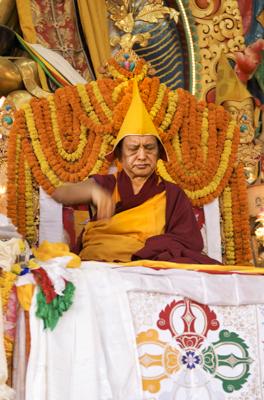The Index Page provides an outline of the topics discussed in each of the lectures. Click on the links below to go directly to a particular lecture.
Lecture 1
December 1, 1997
- Meditating on the lamrim brings peace
Lecture 2
December 3, 1997
- What is the Dharma?
- Atisha
- The benefits of studying the lamrim
- Clinging to this life brings suffering
- Everything depends on the motivation
Lecture 3
December 4, 1997
- Goats and vegetarianism
- Repaying the kindness of others
- Our ego blocks us from repaying their kindness
- Serving others in the best way
- Snakes cannot cease the cause of samsara
Lecture 4
December 5, 1997
- The three types of suffering
- Searching for the I: The object of refutation
- Searching for the I: The label and the base
- The mind is the creator: Everything is a reflection of our mind
- The mind is the creator: Appearances arise due to imprints
- The mind is the creator: Ignorance is the root of samsara
- Our aggregates are in the nature of suffering
- Is shamatha a samsaric pleasure?
- Refuge for ourselves and others
- The benefits of taking refuge
Lecture 5
December 6, 1997
- Look at all causative phenomena as like an illusion
- Does a dream have a base?
- Is the dream image permanent?
- The three criteria of conventional existence
Lecture 6
December 7, 1997
- Causative phenomena are impermanent
- The requesting prayer of the lineage lamas visualization
- Serkong Dorje Chang and Milarepa
- Developing compassion: Expanding our scope
- Developing renunciation
- The special attitude of bodhicitta
- Gen Jampa Wangdu
- Lama Yeshe was a yogi
- Examples of the buddhas’ enlightened activities
- The guru is an emanation of the Buddha
- Base and label question and answer
- Profound analysis is needed to make realizations stable
Lecture 7
December 8, 1997
- The four aspects of karma: Experiencing the result similar to the cause
- The four aspects of karma: Karma is definite and it expands
- The severity of breaking vows
- The benefits of doing Vajrasattva practice
Lecture 8
December 9, 1997
- We need mindfulness to ascertain impermanence
- Visualization of the merit field of the lineage lamas
- The root guru is the one who has benefited us the most
- Anybody who has given us the Dharma is our guru
- The importance of guru devotion
- The inseparability of the guru and all deities
- How precious that the guru manifests in an ordinary aspect































